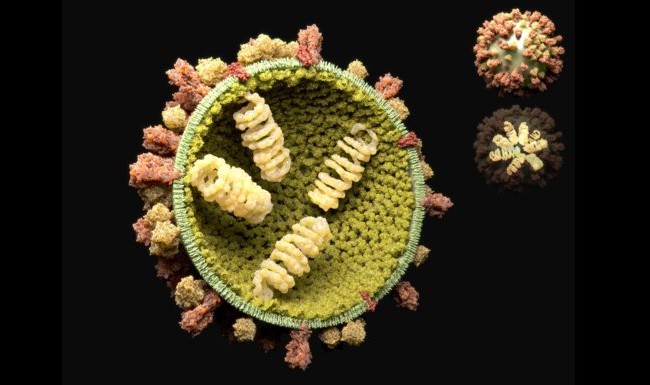
The ability to grow influenza in cell culture rather than chicken eggs paves the way for mass production of the vaccine.

Researchers have developed a method of producing influenza vaccines in mammalian cell culture rather than chicken eggs. The results, published in Vaccine, reduce the risk of allergies and make vaccine production easier to scale up, potentially improving the global supply in the event of an outbreak.
Influenza viruses are substantial threats to human health and vaccination is still the most effective way to fight against the infection and spread of influenza viruses. Since 1940s, embryonated chicken eggs have typically been used to produce human influenza vaccines. However, the egg vaccine production system is associated with major drawbacks, including limited production capacity, difficulties with egg quality control and supply, poor antigenic fidelity and allergic responses.
Recently, producers have switched to mammalian cells as the vaccine-producing substrates. This method is easier to scale up, results in less-adapted mutations and cause no allergic response. Several mammalian cell lines—including African green monkey kidney cell line (Vero)—have been explored. However, the influenza vaccine donor virus PR8 has been unable to grow well in Vero cells.
Led by Dr. Xu Ke from the Institut Pasteur of Shanghai, Chinese Academy of Sciences, PhD students Hu Weibin and Zhang Hong generated a novel high-growth PR8 donor strain for influenza vaccine production after 20 continuous passages.
Sequence analysis and virological assays of the adapted strain revealed that mutations in four viral internal genes (NP, PB1, PA and NS1) were sufficient for the adaptive property. Recombinant virus harboring these mutations (PR8-4mut) displayed an accelerated viral transport into the nucleus and could serve as a backbone donor virus to support the growth of H7N1, H9N2, H5N1 avian viruses and H3N2 human virus in Vero cells.
Importantly, the pathogenicity of the high-growth strain was not changed in either chicken embryos or mice. Thus, the Vero-adapted PR8-4mut could serve as a backbone donor virus to support the growth of influenza subtypes in Vero cells and enhance the production.
The article can be found at: Hu et al. (2014) A Vero-Cell-Adapted Vaccine Donor Strain of Influenza A Virus Generated by Serial Passages. (AsianScientist)

86-10-68597521 (day)
86-10-68597289 (night)

86-10-68511095 (day)
86-10-68512458 (night)

cas_en@cas.cn

52 Sanlihe Rd., Xicheng District,
Beijing, China (100864)

